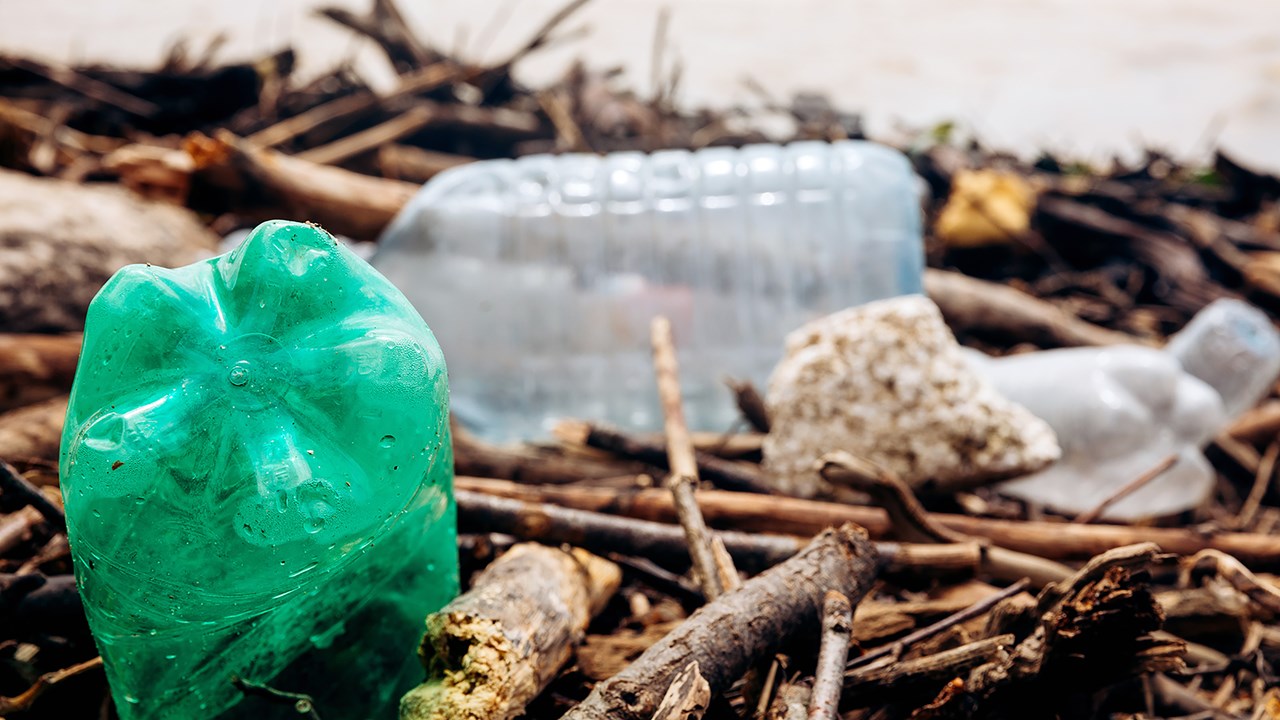Subscribe to Our Blog
Receive updates from our team as we share application notes, customer spotlights, educational tools, spectroscopy how-to’s, and more.

The now-ended Ocean Insight Grant Program encouraged the use of spectroscopy in support of research promoting a safer, cleaner, healthier world. In this recurring series from 2021, we profiled grant award winners and their work.
For 2020 Grant Program award winner Biko Biolabs, LLC (Cambridge, Mass., USA), spectral sensing is an important tool in the company’s efforts to remediate plastic waste through bulk electro-oxidation techniques. In this recent interview, Biko founder Kelsey Sakimoto shares his thoughts on the challenges of taking on environmental plastic pollution. This interview has been edited for length and clarity.
Q: How is Biko’s work progressing, and how has the equipment grant helped?
Sakimoto: We're moving faster every day! For young companies like Biko Biolabs, the pace of research and development is exponentially accelerated by big, often initially inaccessible capital purchases, like spectroscopy tools. The grant moved our work from a lot of time-consuming, frankly old-fashioned assays and other analytical tools to much more rapid and insightful measurements that techniques such as NIR reflectance spectroscopy can offer.
Q: In August 2021, you received a grant through the National Science Foundation (NSF) Small Business Innovation Research (SBIR) program. How did your work with us help in the process?
Sakimoto: Even though the SBIR program is designed to fund high technical risk companies and projects, it's always crucial to go in with strong, quantitative confidence in the feasibility of your new project. Biko Biolabs was not spun out of a university with a decade of grant-funded research to rely upon; we built a lot of our understanding and supporting evidence from scratch. The initial data we got from your equipment grant instilled in us the confidence that we had something exciting and special, but also helped us lay out clear priorities and objectives leading to a stronger SBIR grant application.
Q: Your plastic waste remediation process involves electro-oxidation. How does it work?
Sakimoto: Electro-oxidation stems in part from a long-standing problem in renewable hydrogen fuel. To electrochemically split water into oxygen and hydrogen gas, it takes four electrons to make one molecule of oxygen. This is very hard to do cheaply, and often you can only get two electrons, producing hydrogen peroxide instead of oxygen gas. While not as useful for renewable energy applications, this hydrogen peroxide is a great oxidant, safer than chlorine bleach, that when combined with an iron catalyst, can produce highly reactive species that can effectively break down recalcitrant polymer chains into organic acids that microbes love to eat.
This electro-oxidation approach builds upon decades of lessons learned from producing hydrogen fuel from water and electricity. But the key will be to make the electro-oxidation process cheap and safe at the small scale, matching the diffuse, decentralized way that plastic waste is generated. We take a lot of inspiration from the way composting operates. It can be done at the massive, centralized scale, but works equally as well at the city, community, or even individual home level.
Q: What inspired you to start Biko Biolabs?
Sakimoto: Biko Biolabs stemmed from frustration, to be honest. I was born and raised in Hawaii, which like many small, remote, island communities, doesn't always have access to technology developments designed for the size and scale of the mainland U.S. Recycling is a particularly glaring disparity, with only #1 and #2 plastics recycled, and the rest landfilled or incinerated. I wanted to work on something that wasn't motivated by investors looking for the largest market and the highest profit margins, but instead was about building solutions available and accessible to all. People define impact in a myriad of ways, but for me, it boils down to making sure that everyone can benefit from the boons of science and engineering.
Q: Why is dealing with pollution from plastics such a daunting task?
Sakimoto: The key to environmental plastic pollution is preventing it in the first place, at the source. But a big roadblock in more comprehensive plastic waste management is contamination and aging. Every speck of food, dirt, and ink makes it harder to produce new plastics from recycling, and macroplastics collected from environmental cleanups are too degraded. Shipping these low-value materials to centralized processing facilities, incinerators, and landfills is costly, and provides too many points for accidental release.
In the electro-oxidation process, we're not making new plastics: we're breaking down a wide range of materials into organic acids that microbes love to eat. We're also doing so with smaller, distributed systems that remediate the waste then and there at the individual, household, and community level. In a piece of plastic's chain of custody from leaving someone's hand to entering the environment, the sooner we can transform it into something ecologically benign, the better.
Q: You are using our NIRQuest+ spectrometer for your work. Why the NIRQuest+?
Sakimoto: We were attracted by the NIRQuest+ in part by how ubiquitous such light, flexible NIR systems are becoming in food science, agriculture, environmental monitoring, and bioprocessing. It’s a toolset widely recognized, with new techniques and applications published every day. It really is a workhorse of our R&D – the affordability and portability being key to this growing stage of our company.
Q: How are you using the data you’re capturing?
Sakimoto: We've developed a number of reflectance spectra methods in combination with partial least squares regression models to measure and track the oxidation of waste-plastics in our electro-oxidation system. With appropriate standards and cross-validation, we've been able to measure a number of things about our oxidation process using the NIRQuest+: the formation of oxidized carboxyl versus hydroxyl functional groups, average methyl-group and polymer chain-end concentration, and a range of other metrics to understand how quickly we are oxidizing this plastic waste, and what is it turning into.
Q: People everywhere have heard a lot about issues affecting the environment lately, including the consequences of pollution from microplastics and the effects of climate change. Do you think public sentiment is changing about how we view the environment?
Sakimoto: Now that we are living through the tangible, adverse impacts of climate change, and have a few generations that deeply understand the importance of science in predicting, preparing for, and persisting through environmental and public health disasters, I certainly think public sentiment is rallying around a more sustainable, just and equitable world. Technology isn't a bottomless pool that will always be able to accommodate our worst instincts. At the same time, there's no returning to some pre-industrial, idyllic agrarian utopia before all our modern ills began. Science is our way of understanding how to live within our (ecological) means, and technology is there to help us make the best of it.
Thank you, Dr. Sakimoto.
Santiago Arellano of Chalmers University of Technology discusses his work measuring the properties of aerosols, fine particles and droplets suspended in air.
Arif Cetin, a researcher at the Izmir Biomedicine and Genome Center, discusses his work developing an optical sensing platform to monitor the effectiveness of drug therapies for cancer treatment.
High-sensitivity NIR spectrometers for applications within the 900-1650 nm, 900-2120 nm and 900-2450 nm wavelength ranges
Find the best Ocean Optics NIR spectrometer to meet your price and performance criteria. We have options at every level.

Receive updates from our team as we share application notes, customer spotlights, educational tools, spectroscopy how-to’s, and more.